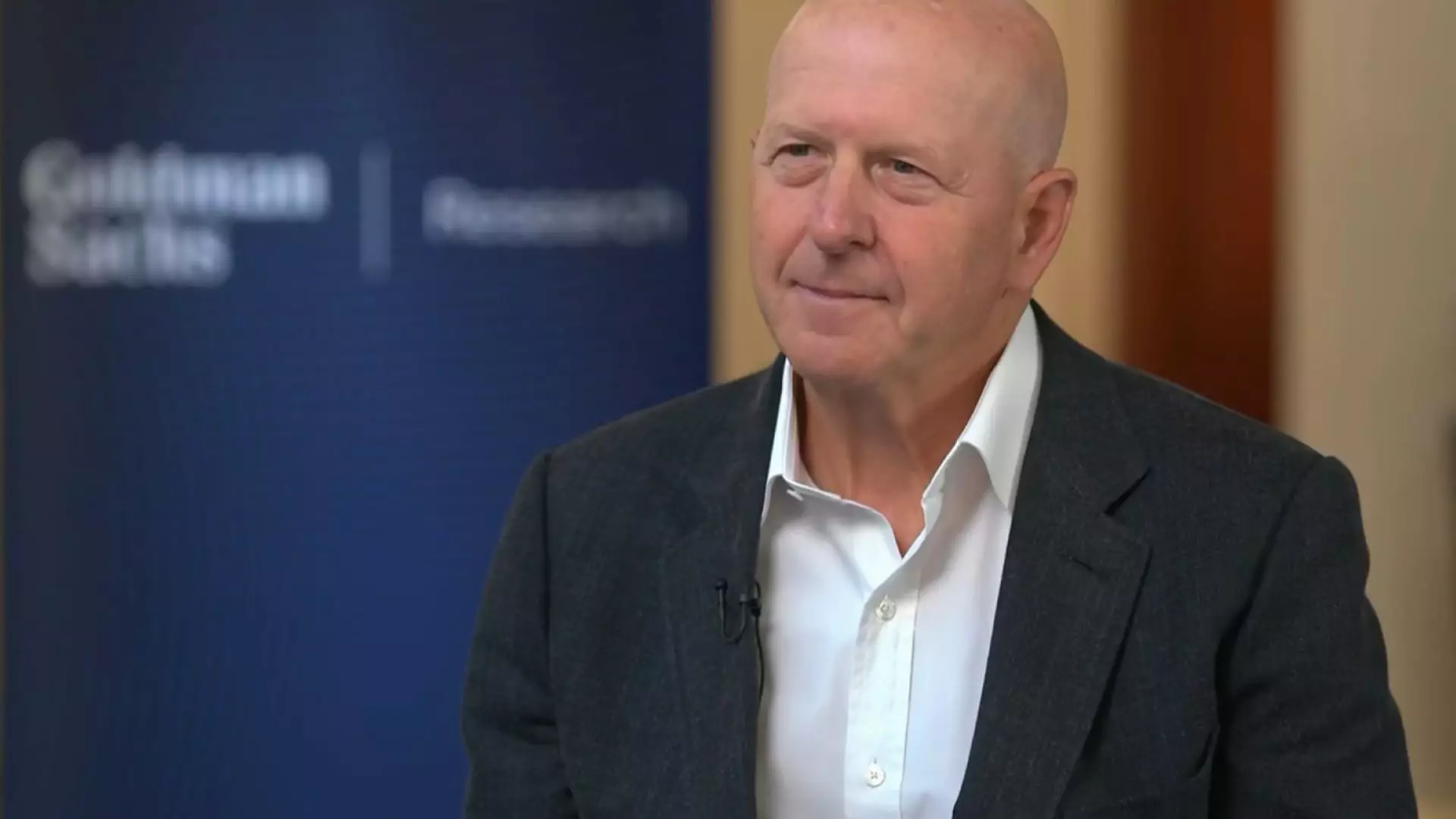Goldman Sachs recently reported its first-quarter earnings that surpassed market predictions, a move celebrated yet scrutinized amid turbulent economic waters. The bank’s earnings per share of $14.12 eclipsed the $12.35 expected, alongside revenue of $15.06 billion against a forecasted $14.81 billion. Such figures might lead external observers to assume a considerable leap in financial stability; however, digging deeper reveals an undercurrent of strategic missteps and over-reliance on volatile trading revenues.
The noteworthy 15% increase in profits to $4.74 billion is largely attributed to a robust rise in equities trading revenue, a transient financial fantastical gain that raises questions about the sustainability of their business model. This raises an undeniable concern: Is Goldman’s triumph built on a shaky foundation, overwhelming signals that reveal broader market vulnerabilities? It is crucial to acknowledge both the achievements and the lurking dangers behind the curtain of corporate performance.
Equities as a Double-Edged Sword
Goldman Sachs’ equity trading revenue surged by an impressive 27% to $4.19 billion. Yet, this spike reflects more a reaction to market fluctuations than a solid, strategic growth plan. Analysts from StreetAccount had previously forecasted a more modest figure, yet Goldman’s actual performance blew those predictions out of the water by nearly $540 million. Nonetheless, one must consider the economic volatility that fueled this victory: with trade tensions escalating under former President Trump’s administration, such aggressive growth can often be misleading.
What stands out is the firm’s apparent lack of diversification in revenue streams. Goldman’s fixed income division lagged significantly behind, recording merely a 2% growth to $4.4 billion, falling short of the expected $4.56 billion. This poor performance in a traditionally sturdy division underscores an apparent complacency, illuminating a vital truth: a single department’s success can mask potential systemic weaknesses throughout the entire organization.
A Signal of Financial Distress
Investment banking fees exemplify the underlying financial distress as they plummeted 8% to $1.91 billion. These figures not only missed investor projections but also illustrate a broader worry within the financial sector as advisory revenues dwindle. Is this a sign that businesses are tightening their belts, becoming hesitant to seek high-fee advisory services amid an unstable economic landscape?
Moreover, Goldman’s wealth management division echoed similar concerns, feeling the sting of a 3% revenue drop from a year ago, amounting to $3.68 billion—again just shy of expectations. With lower returns stemming from private equity and public stock investments, shareholders must ponder whether the current model can withstand the pressures of economic turbulence looming on the horizon.
Trust in Leadership Amidst Market Chaos
CEO David Solomon’s remarks hinted at an astute awareness of the precarious environment created by increasing trade tensions, yet there is a sense of ambiguity in how deeply this awareness penetrates the firm’s strategic direction. His optimism about maintaining client support seems dissonant against the backdrop of a fluctuating industry climate. What is truly needed is a compelling directive for both stakeholders and clients, a clear roadmap that addresses these concerns head-on.
Comparisons drawn between Goldman Sachs and rival institutions such as JPMorgan Chase and Morgan Stanley indicate that the winds may not all be blowing in favor of Goldman. While their competitors celebrated staggering growth in equities trading, Goldman’s dependence on trading revenues could be seen as a high-risk gamble—one that, if it fails, will magnify their already evident weaknesses in other sectors.
In light of these results, stakeholders are left to question whether Goldman’s strategies can indeed support robust growth or whether they are merely riding the volatile waves of emergent market conditions. Will the bank react with the requisite agility, or will complacency in their past successes ultimately undermine their future prospects? The perception built upon these figures may very well rest on a precipice, teetering between fleeting success and deeper financial introspection.


Leave a Reply